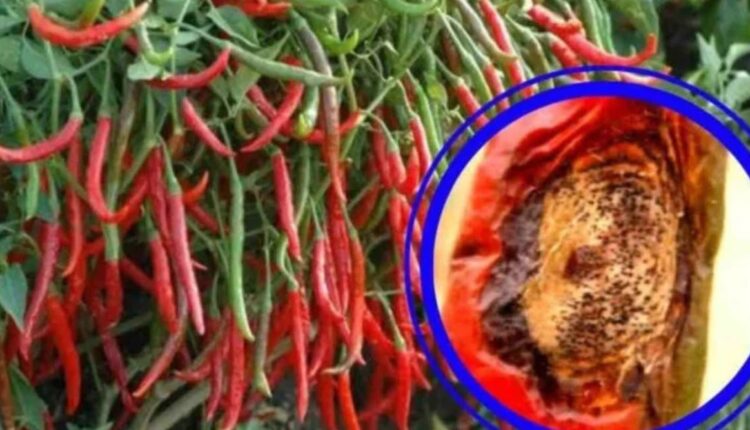Chilli Cultivation: Management of major pests, diseases and preventive measures
Scientific management is necessary in time
Chilli Cultivation | Chilli is a major cash crop. At present, chilli is being cultivated in an area of about 7,92,000 hectares in our country, from which 12,23,000 tonnes of chilli is obtained. Andhra Pradesh, Karnataka, Maharashtra, Odisha, Tamil Nadu, Madhya Pradesh, West Bengal, and Rajasthan account for 80 percent of the total production of chilli in the country. Since its demand remains throughout the year, its cultivation is profitable for the farmers. But chilli cultivation can be harmed by pests and diseases, so their scientific management is necessary.
Major Pests of Chilli
Thrips – The scientific name of this pest in chillies is Citrothritus dorsalis Hood. This pest sucks the juice from the leaves and other soft parts of the chilli plants at the initial stage itself, due to which the leaves turn into a boat shape. To avoid this, before sowing, treat one kg of seed by adding 5 grams of thiomethamzam. In addition, for chemical control, Fipronil is 5%. Spray after mixing it in 1 litre of water.
White fly – This insect is called Bemisia tavekai in scientific language. These insects suck the juice by sticking to the lower surface of both small and large leaves. To prevent this pest, depending on the number of insects, 2 ml of dimethate is given. Spray by mixing quantity with water. If the effect of the pest is high, then sprinkle 5 grams of Thiamethisum and 25 WG mixed with 15 litres of water.
Mite- Due to the effect of this pest, the leaves turn downwards. It is very small in size and sucks the sap from the surface of the leaves. To protect the plants from this, spray up to 4 percent of Neem Niboli’s extract. Apart from this, mix 2.5 ml Diocophalaya and 3 ml Omlite in one litre of water and sprinkle on the plants.
Major diseases of Chilli
Damping off – This is a common disease in chilli plants, due to which the plants do not develop properly. They are small in size, and the part of the stem located on the surface of the ground turns black. Due to its effect the plants become completely weak and then die. To avoid this, the chilli nursery should be prepared with a raised bed method, so that the water can drain properly. Before sowing, treat the seeds with Thiram or Captan @ 3 grams per kg.
Shyam Varna (Anthroclose)- Due to this disease, small black spots are formed on the leaves of the plants and the leaves start falling. Also, due to its effect, the branches of the plants start drying from top to bottom. To prevent this, make a solution of 2 grams of mancozeb or zainab in one litre of water and sprinkle it 2 to 3 times at an interval of 15 days.\
Leaf curl and mosaic virus disease
Due to leaf curl disease, the leaves of plants shrink and become small and wrinkles appear on it. Whereas due to mosaic disease light or dark yellow spots are formed on the leaves. To prevent the spread of the disease, uproot and burn the affected plant and to prevent it from spreading further, spray one ml Dimethoate 30 EC mixed in one litre of water. At the time of nursery preparation, mix 8 to 10 gm of Carbofuran 3G in the soil before sowing. Along with pest and disease management, weed control is also necessary from time to time.
Also Read: Why Hawthorn farming is green gold for farmers?
Contact us – If farmers want to share any valuable information or experiences related to farming, they can connect with us via phone or whatsapp at 9599273766 or you can write to us at “[email protected]”. Through Kisan of India, we will convey your message to the people, because we believe that if the farmers are advanced then the country is happy.
You can connect with Kisan of India on Facebook, Twitter, and Whatsapp and Subscribe to our YouTube channel.



